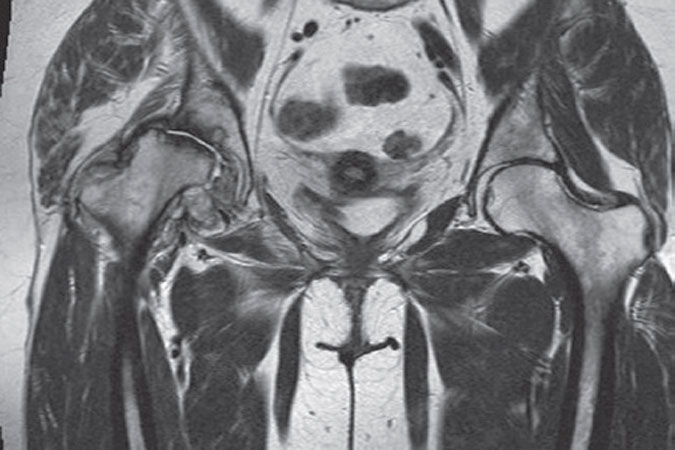Avascular Necrosis: Understanding the Cellular Death of Bone
This article provides a comprehensive understanding of avascular necrosis, a condition characterized by the cellular death of bone tissue due to a disruption in blood supply. It highlights common areas prone to this condition, particularly the femoral neck in elderly patients. The piece goes on to describe the treatment options for avascular necrosis, focusing on the necessity of replacing the necrotic femoral head with a prosthesis in severe cases. The article concludes by emphasizing the importance of ongoing medical advancements in managing this condition and improving patient outcomes.

Avascular Necrosis
Our skeletal system is a network of living tissues, relying on a constant blood supply to maintain its health and function. However, certain conditions can disrupt this blood flow, leading to severe complications such as avascular necrosis. This article aims to delve into the complex nature of avascular necrosis, exploring its causes, impact, typical sites, and necessary treatments.
Understanding Avascular Necrosis
Avascular necrosis, also known as osteonecrosis, is the cellular death of bone tissue resulting from a temporary or permanent loss of blood supply to the bone. Without an adequate blood supply, the bone begins to die, and over time, it may collapse. This condition can occur in various medical situations, many of which have unclear etiology.
Common Sites for Avascular Necrosis
While avascular necrosis can affect any bone, certain areas are more susceptible. A typical site for this condition is the femoral neck, the thin section of the thigh bone that connects the head of the femur to the shaft. This is particularly prevalent in elderly patients who suffer a fracture in this area.
The fracture disrupts the continuity of the cortical medullary blood flow, leading to a loss of blood flow deep to the retinacular fibers. This disruption essentially renders the femoral head bloodless. Subsequently, the bone tissue in the femoral head undergoes necrosis, which over time, can lead to the collapse of the femoral head.

Treatment of Avascular Necrosis
When it comes to treating avascular necrosis, the severity of the condition and the patient’s overall health are crucial factors. In cases like the aforementioned femoral neck fracture, it becomes necessary to replace the necrotic femoral head with a prosthesis – a process known as arthroplasty or hip replacement surgery.
The goal of this procedure is to relieve pain, improve function, and enhance the quality of life for the patient. The prosthetic implant can mimic the shape and function of the original femoral head, enabling patients to regain mobility and lead active lives.
In less severe cases of avascular necrosis, or if detected early, non-surgical treatments might be sufficient. These can include medication to manage pain and inflammation, physical therapy, and lifestyle modifications.
Conclusion
Avascular necrosis is a significant medical condition that underscores the importance of adequate blood flow to the bone tissue. While it can be a challenging condition to manage, especially in its advanced stages, medical advancements, particularly in joint replacement surgery, have made it possible to restore function and quality of life for patients. As we continue to deepen our understanding of the circulatory needs of bone tissue, we move a step closer to developing more effective preventive measures and treatments for conditions like avascular necrosis.











